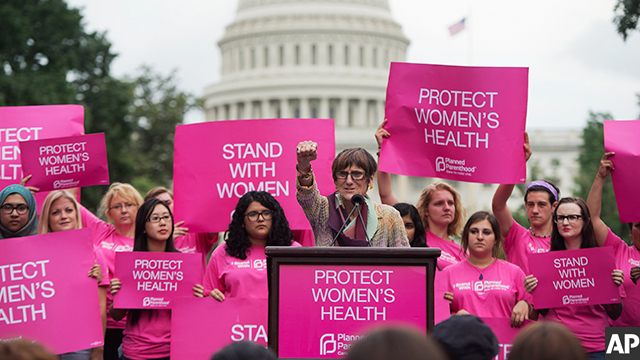By Zoe Smith
Zeroing out federal funding for Planned Parenthood has serious implications for taxpayers and U.S. women that everyone should be aware of. The Republican party’s transparency concerning such issues, however, has been lacking.
Speaker of the House Paul Ryan has stated repeatedly in the press that defunding Planned Parenthood is part of the Republican Party’s agenda in dismantling Obamacare. He, like many Republicans, argues that since Planned Parenthood provides abortions, the organization should not receive any federal funding. This stance appeals to many pro-life, conservative voters and has given the GOP traction for this issue. But what the party does not express to supporters is that the Hyde Amendment, established in 2013, makes it so “federal funds cannot be used for abortion services, and plans receiving federal funds must keep them segregated from any funds for abortion services.”
Even with knowledge about the Hyde Amendment, there are still voters who wish to defund Planned Parenthood because they do not want their taxpayer dollars going to an organization affiliated with abortions. They instead suggest re-allocating that federal money to community health centers that provide comprehensive health care.
While this may seem like a viable solution for many voters, it is not necessarily a practical one.
Republicans will face two major problems in their efforts to repeal the bill. For one, permanently making Planned Parenthood ineligible for federal funds would be more expensive for the government to maintain. It is predicted that without access to affordable contraception, less women would use birth control, causing more pregnancies to occur. A Congressional Budget Office report reminds us that “about 45 percent of all births are paid for by the Medicaid program.” Consequently, direct spending is projected to increase by $130 million over the span of 10 years if the bill gets implemented. Instead of taxpayers’ dollars being used to prevent abortions and unwanted pregnancies, a higher percentage of funds would be re-allocated to community health centers unattainable to many low-income women.
Texas faced this issue when it barred Planned Parenthood from receiving federal funding back in 2013. In response, the New England Journal of Medicine published an article revealing the direct relationship between defunding Planned Parenthood, the reduced rate of women’s use of contraception, and increased rates of childbirth in Texas. The cut in federal grants caused 82 family-planning clinics to close, about one-third of which were affiliated with Planned Parenthood. The study found that a majority of women who sought contraception from those closed facilities, specifically women from the counties that closed Planned Parenthood facilities, did not seek a new provider. Consequently, there was an increase in childbirths, covered by Medicaid, from women in those same counties. In addition, this study from the Texas Department of State Health Services indicated an increase of about 1,000 abortions from 2012 to 2013. If the GOP is successful in their revision, we may face the same outcomes that Texas did, but on a national level.
The second issue Republicans would face is that there are a few Republican senators, such as Lisa Murkowski of Alaska and Susan Collins of Maine, who have expressed concern with the repeal. Implementing the repeal process would require 51 out of the 52 votes the Republican Party currently has. Only three Republicans would be needed to prevent the passage of the repeal.
This issue should not be a matter of partisanship, yet has become a debate between the parties. Providing women with adequate, convenient healthcare should be a concern for every individual. Men have affordable, available access to condoms, yet there is still a debate as to whether women should have similar opportunities to contraception.
With the largest percentage of funding for Planned Parenthood being federal, the organization relies on such funds to operate. While the media may fail to sufficiently construe what Planned Parenthood does with such funds, it should be noted that the organization is much more than abortions and birth control. The funding that Planned Parenthood receives allows the organization to pay for cancer screenings, annual exams, family planning, sex education, and birth control. By being the largest provider of birth control, the organization is also the largest preventer of abortions.
In addition, many hospitals that perform abortions also receive federal reimbursement for visits, treatments, and procedures unaffiliated with abortions, like Planned Parenthood. If the GOP plans to defund Planned Parenthood based off of this reasoning, some would argue that such hospitals should lose their funding as well.
In addition, birth control pills are not solely used for contraception. A report by Rachel K. Jones indicated that only 42 percent of women use the pill exclusively as a form of contraception. That means over 50 percent of women use the pill for additional medical uses such as hormone imbalances, severe cramps, controlling menstrual bleeding and acne. This is yet another reason why defunding Planned Parenthood concerns all aspects of women’s health, not solely abortions.
Even Paul Ryan’s tweet the morning of January 7 was a bit misleading. “Everything #Obamacare has kept from you—more choices, control, and freedom—we want to put them back in your hands.” Defunding Planned Parenthood would not give women more freedom, control or choices regarding their healthcare. In fact, the repeal would do just the opposite: severely limit access to basic women’s health.


